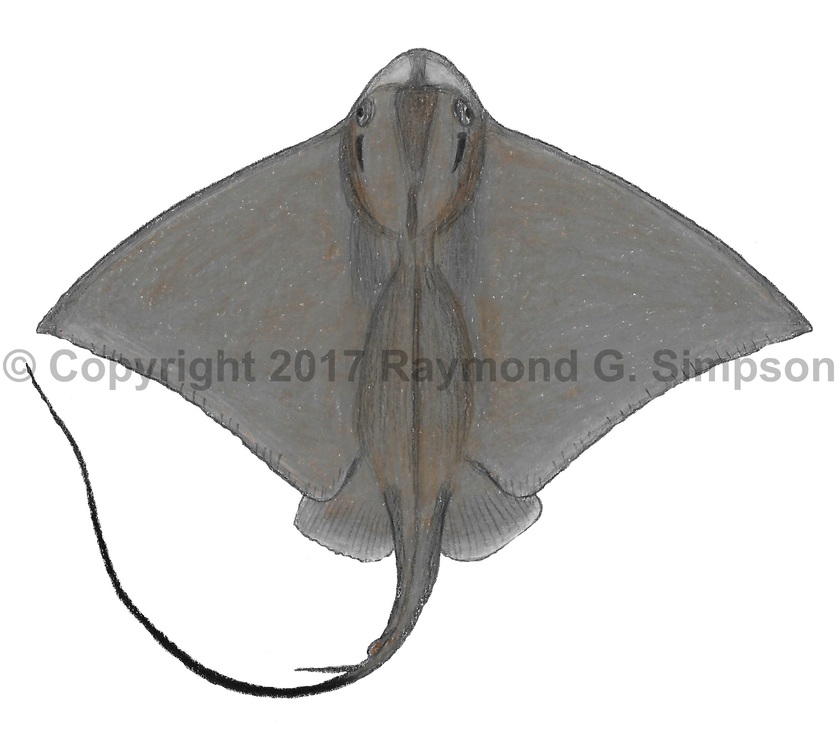
Common Name
Southern Eagle Ray
Year Described
Garman, 1885
Identification
Disk broad and rhomboidal. Width of disk longer than length of body. Trunk thickened, especially dorsally. Head projects noticeably. Snout fleshy, conical and projecting (longer than mouth width). Mouth subterminal. Nasal curtain without V-shaped notch. Teeth in 7-10 rows of plates of almost equal width each. Spiracles prominent on side of head. Pectoral fin joins head under level of eye and connects to rostral lobe. Anterior disk margin straight. Posterior disk margin concave. Tips of pectoral fin bluntly rounded. Pelvic fins project beyond rear disk. Tail long with a spine at base near dorsal fin. Dorsal fin small and inserted posterior to end of pelvic fins. Skin smooth without denticles.
Color
Dorsum gray, brown, or gray-brown. No markings or spots. Ventrum white with gray near the pectoral tips, pelvic tips and posterior margin. Tail black.
Size
Maximum size to 100cm in width but usually <70cm in width. Mature females average larger.
Habitat
Coastal waters to 180m depth but usually near shore. Swims above bottom but commonly found on the bottom feeding.
Range
South Carolina to Argentina, including the Caribbean Sea and the Gulf of Mexico.
References
Last, P.R., White, W.T., Carvalho, M.R. de, Séret, B., Stehmann, M.F.W & Naylor, G.J.P (Eds.). 2016. Rays of the World. CSIRO Publishing, Melbourne. 790p.
Other Notes
Compare to Myliobatis ridens which is found only in the southwestern Atlantic and has a wider mouth, shorter snout, and more robust tooth plates.